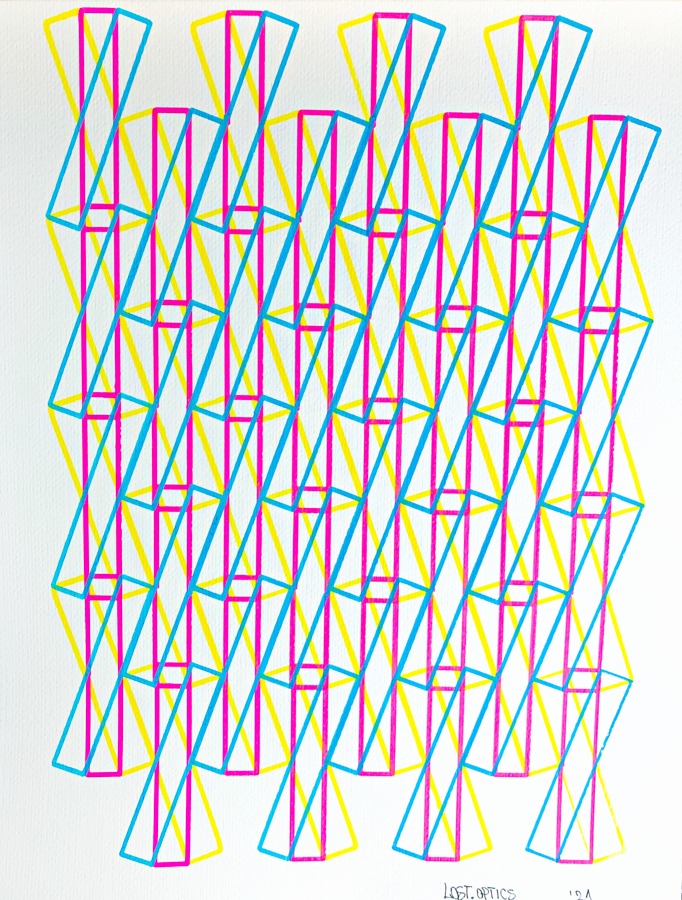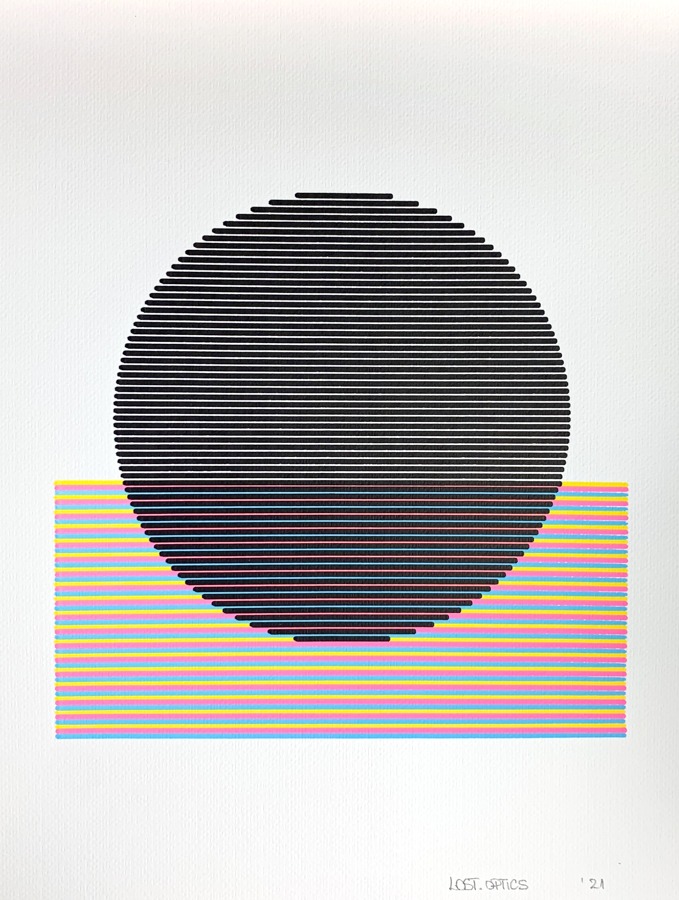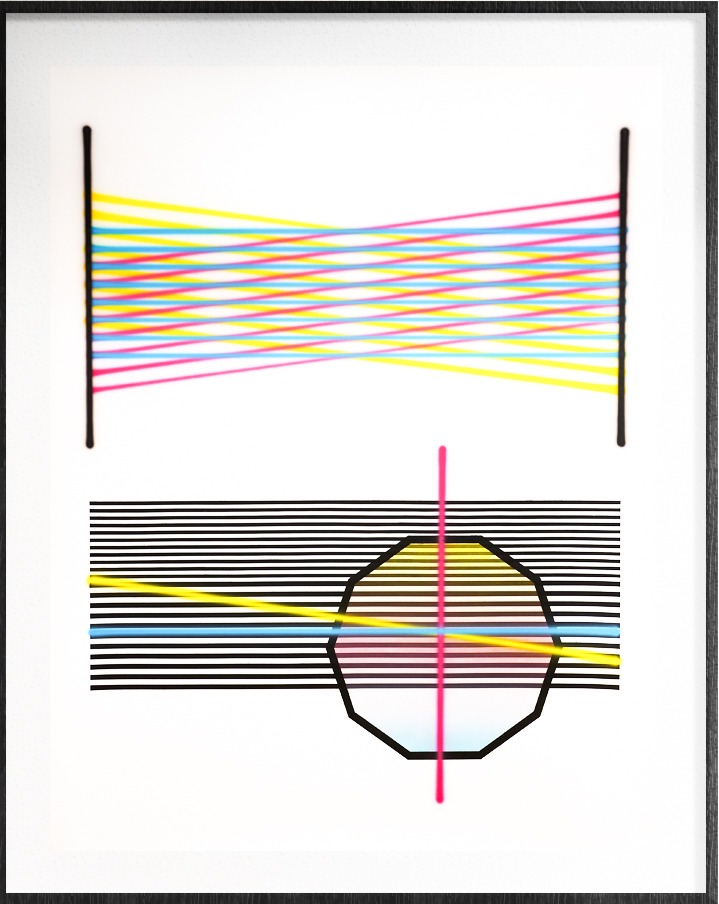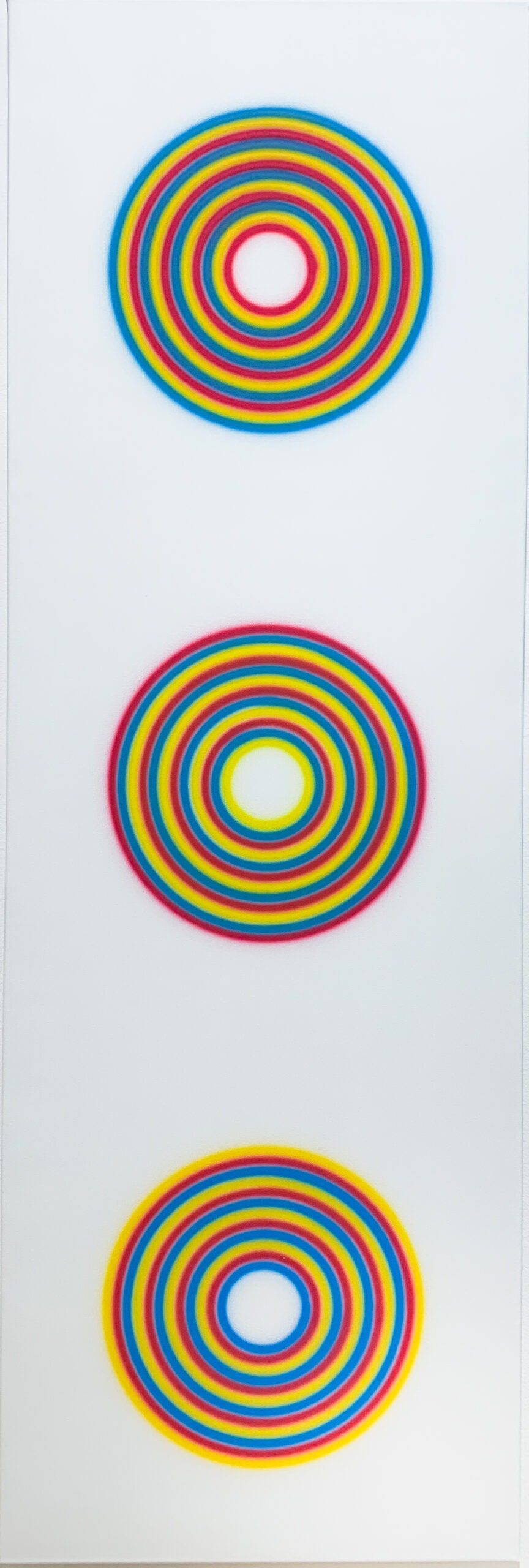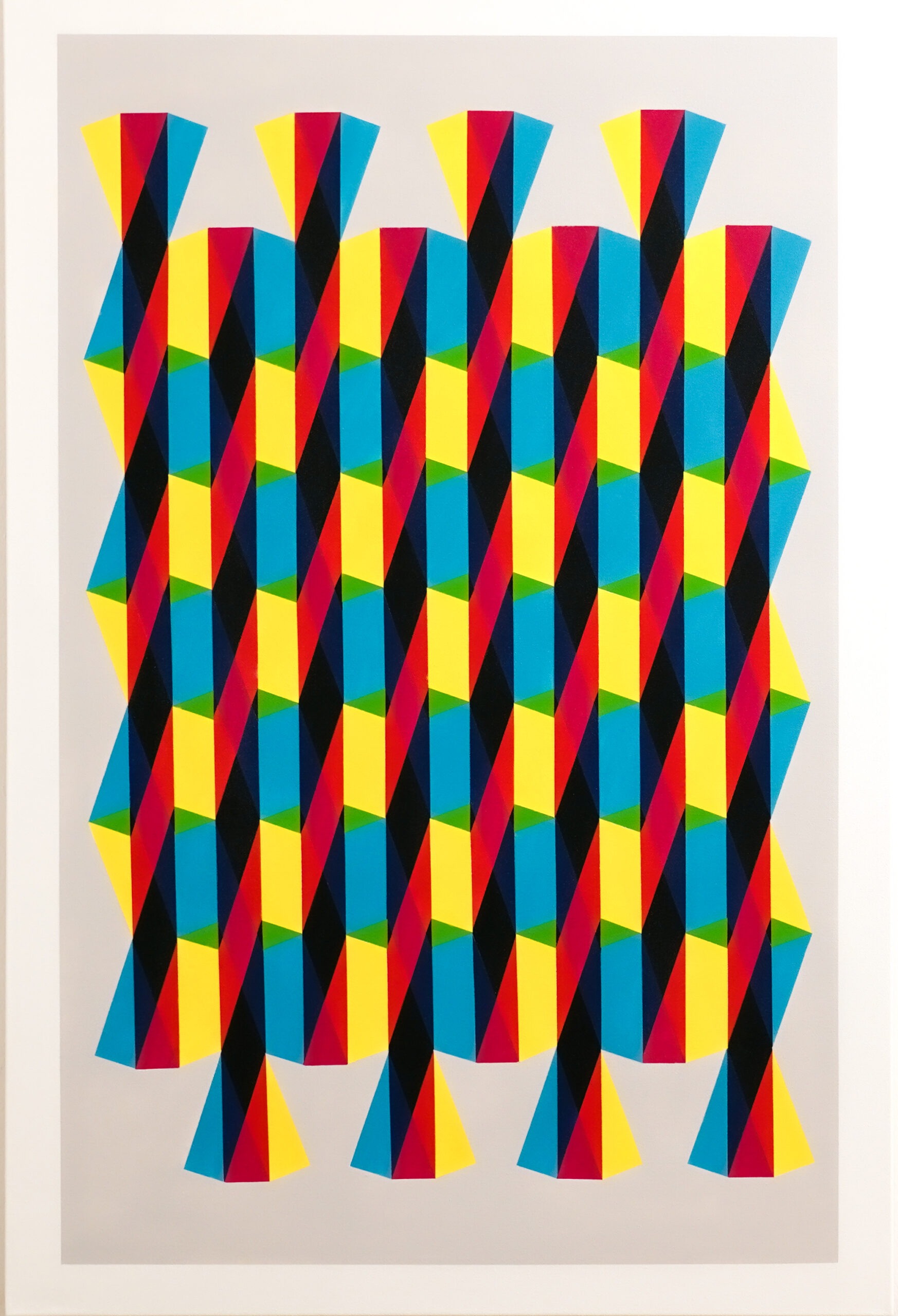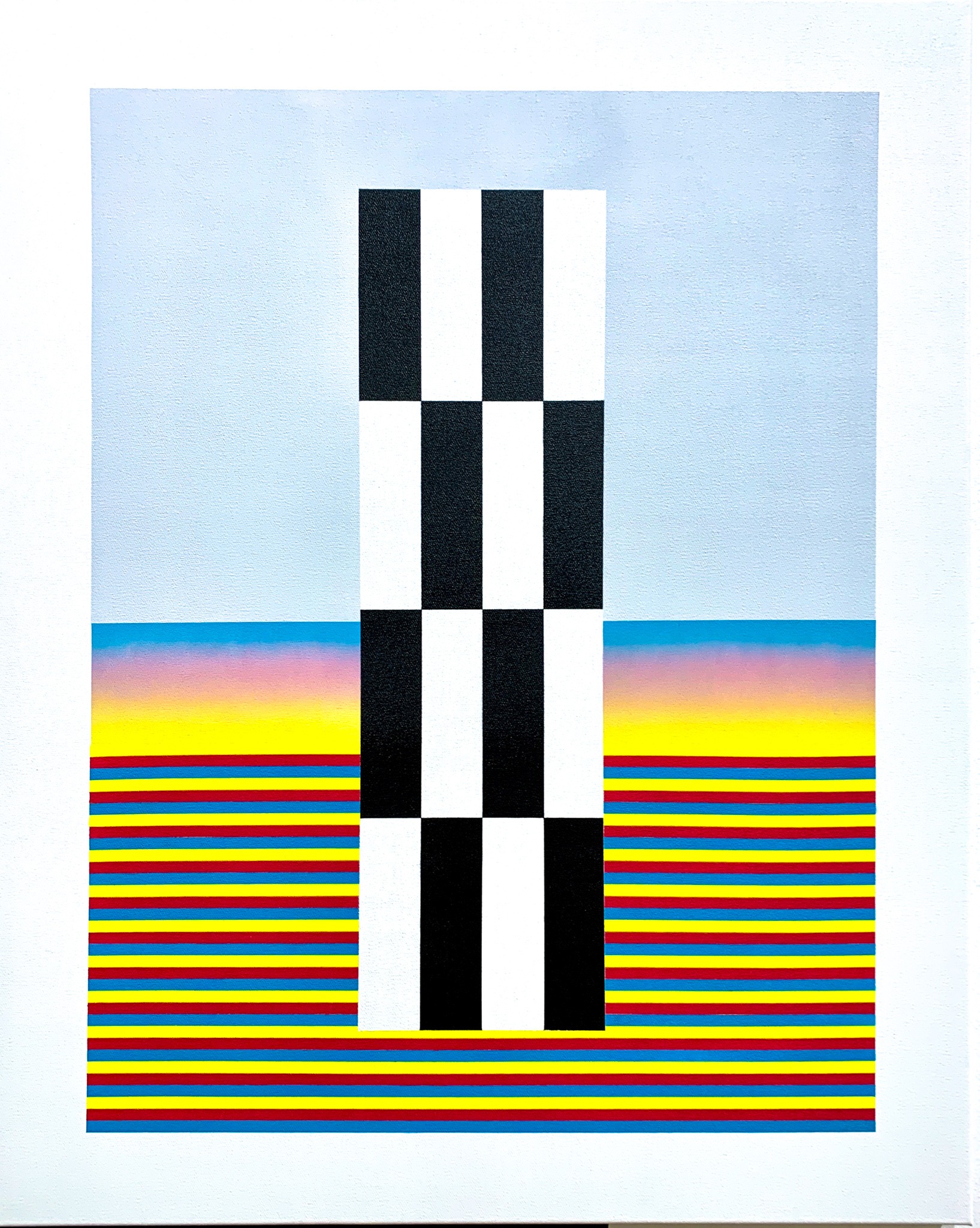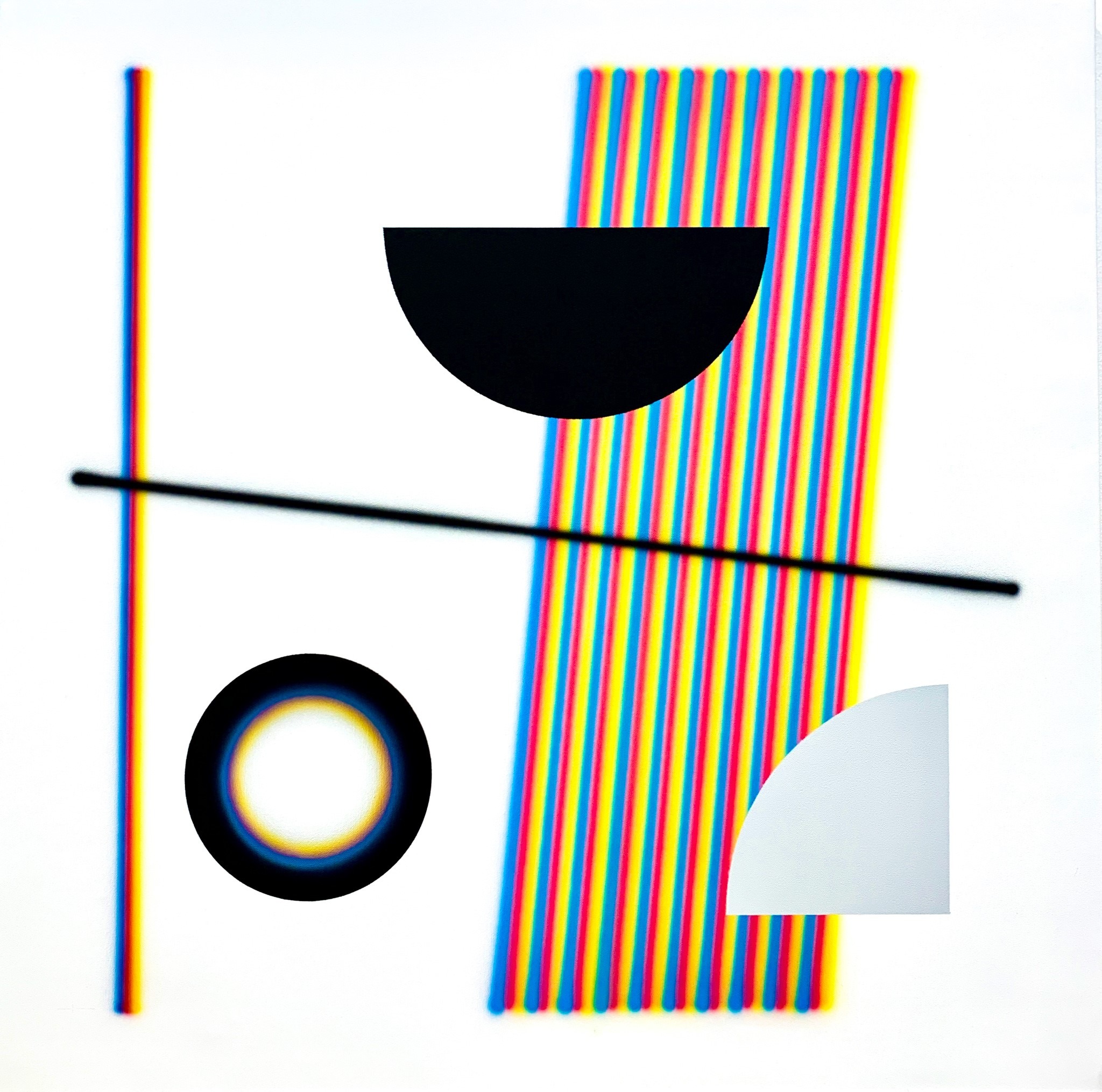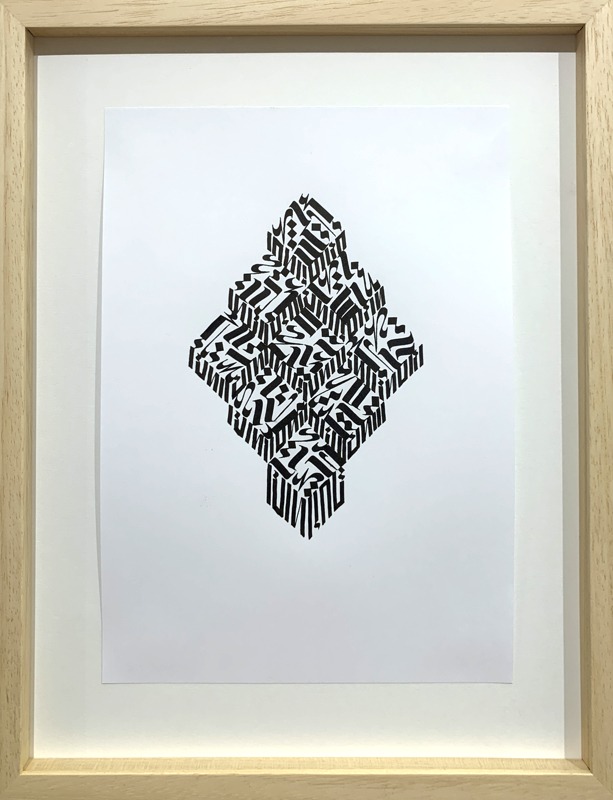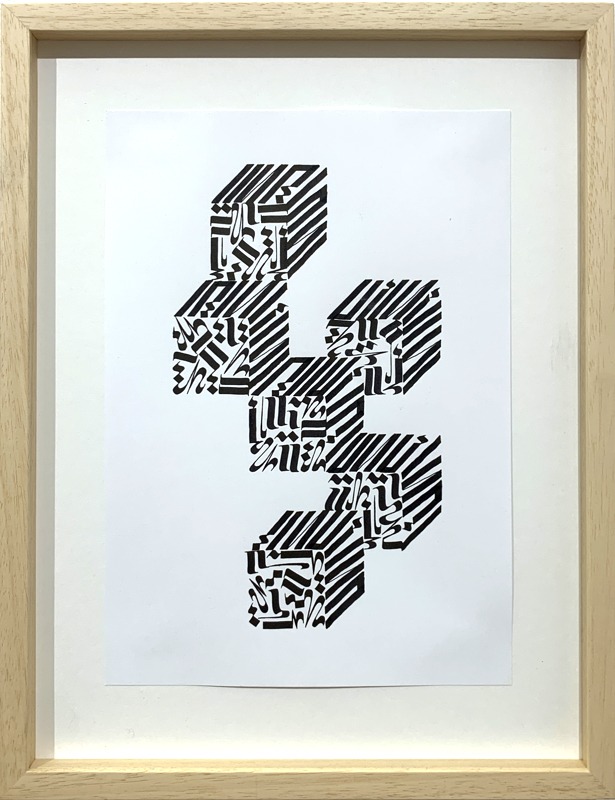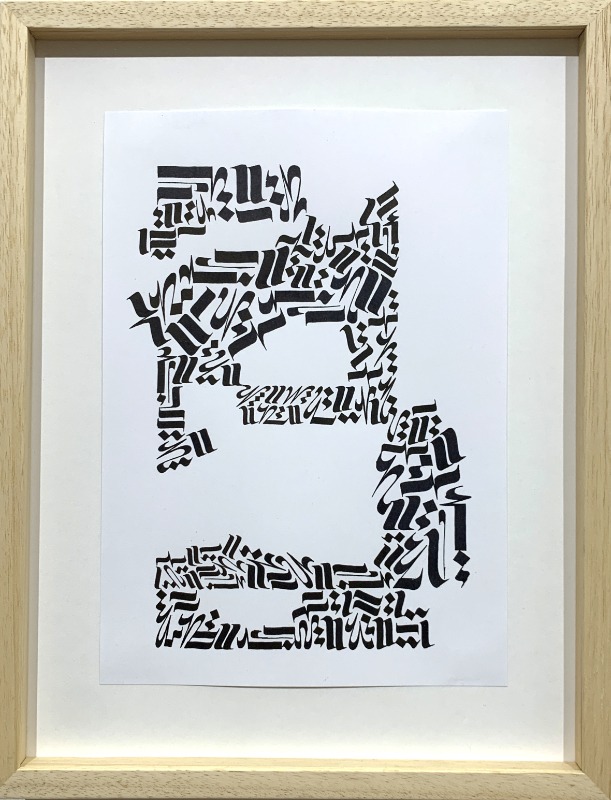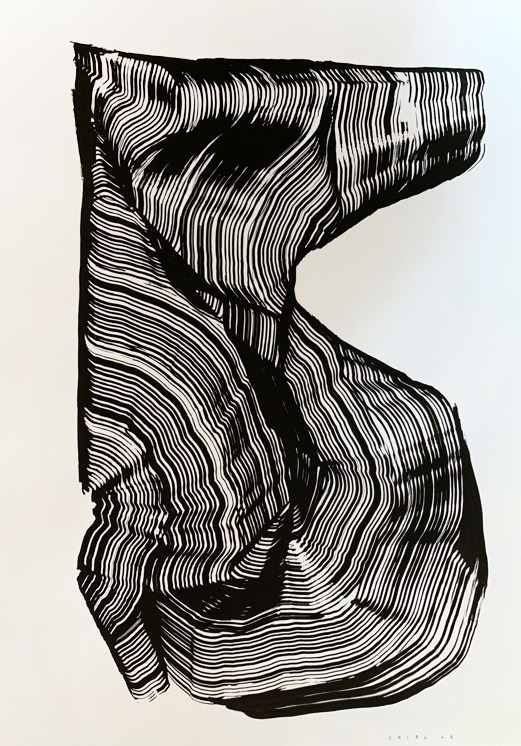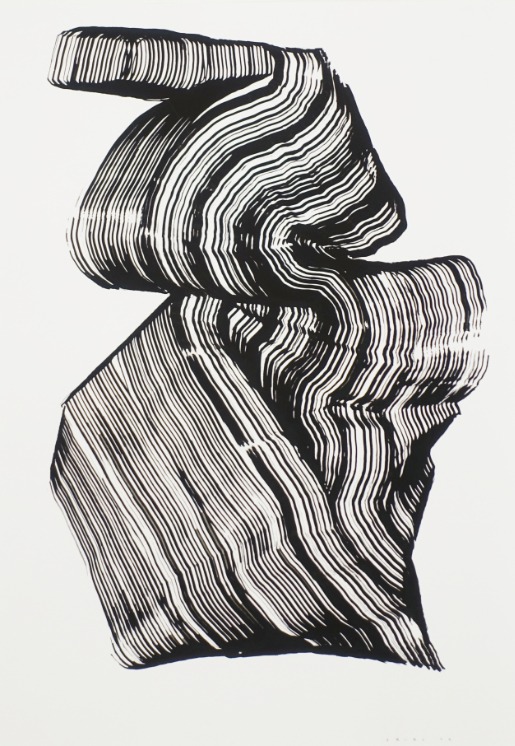LOST.OPTICS
22.10-18.11.2021
Lost.Optics shows us geometric shapes, in bright colors, futuristic in style, influenced by
digital art forms – a modern variant of Op Art. Op Art is considered a variety or further development of concrete art. The works of art are abstract, sometimes colorful, with ordered bodies, lines and patterns, and their arrangement creates dynamic visual effects. This gives the impression of movement, vibration,overlapping. The high phase of Op Art began in the 50s of the 20 th century. One of their early protagonistswas Victor Vasarely.
Some works can be counted as kinetic art because they not only simulate movement, but
(individual) elements are actually moving – manually, mechanically or electrically. The visual
effects change as a result and are reinforced compositionally.
The perspective and the movement of the viewer also change the perception of the optical
effects. Op Art makes viewing, viewing habits and patterns of perception its theme and
reflects the illusions of true perception. Viewers put themselves in a relationship to the
pictures, make themselves opposite, each with individually special experiences and feelings.
The shapes, lines, and patterns of the pictures themselves do not represent mundane
objects. There is therefore nothing in them that can be objectively recognized. This is a
challenge for the viewer. People want to make sense of what they see. They look for
knowledge in visual stimuli that correspond to their experiences. As psychological studies
show, they tend to ascribe a meaning, even if it has no structure, no pattern and does not
want to represent anything – such as a surface with a large number of randomly applied
points.
Op Art pictures want to challenge, irritate, confuse. They often make it impossible to fix your gaze on i ndividual elements, especially when they are displayed in dark rooms. The illusion of movement is additionally reinforced by the autokinetic effect. And that may only be tolerated to a limited extent – without flickering and dizziness. The viewer is forced to evade the stimulus – and thus the illusion! In this way the illusion itself and knowledge, the way we gain knowledge, can be reflected.
The term Op Art, short for Optical Art (Optical Art), was coined by the critic Jon Borgzinner,
first introduced in Time Magazine in 1964. The label was established through exhibition
reviews – for example Julian Stanczak’s “Optical Paintings” exhibition at Martha Jackson
Gallery or the exhibition “The Responsive Eye” at the New York Museum of Modern Art
(February 1965).
Vertigo. Op Art and a History of Fraud 1520–1970 was the title of a comprehensive
retrospective at the Vienna Museum of Modern Art (Mumok). With the exhibition, the
museum invited people to “immerse themselves in the world of the illusion of senses and
the shift in perception, the illusions of space and spaces of illusion”. The exhibitors
emphasized: “Vertigo – the title is not borrowed from the Hitchcock classic by chance –
juxtaposes the vibrating works of the Op Art movement of the second half of the 20th
century with selected reference works from the 16th to 19th centuries”. The exhibition
promised, quite rightly, “not only to challenge the sense of sight, but to convey experiences
that affect the entire body. “
Op Art described the Mumok as “a mannerism of concrete art”. Piet Mondrian is cited as a
reference and counterpoint, who strived for measure and harmony in his work and wanted
to evoke impressions of balance and cohesion. Op Art works aim at the exact opposite. Both art movements are formally related. Both work with rational-constructive and repetitive or only slightly modified design principles. Op Art, of course, does not use it to promote serenity. Op Art wants to irritate and overwhelm. Admittedly not to appear spectacular, not superficial, but with the ambition to stimulate reflection, to sharpen the sense of pretenses, false assumptions and conclusions and ambivalences.
Lost.Optics, born in 1986, is an artist from Romania. He lives and works in Bucharest. He
started with graffiti work and developed into the artistic design of public spaces. In the last
ten years he has made a name for himself internationally as a representative of modern Op Art. The exhibition in the AG18 shows pictures on canvases and on paper, and murals in the gallery.












